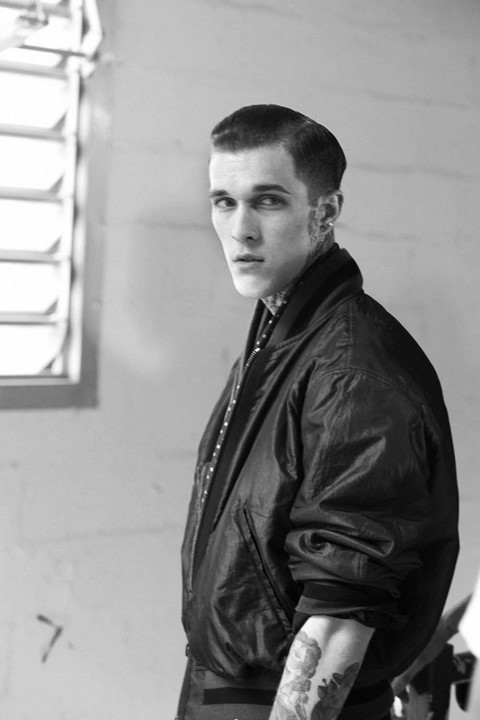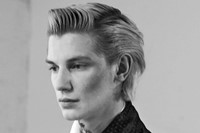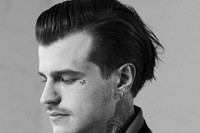We talk to Haider Ackermann about his new collection
“I wanted to challenge myself”, said Haider Ackermann when asked what made him finally decide to create his first-ever menswear collection (bar a one-off show he did at Pitti in 2010). There was a certain poetic reflection on the limits of masculinity in the contrast between the tough-looking, heavily-inked models and the fit-for-a-dandy tailored duchesse satins, embroidered silks and fringed scarves. But while none of the pieces would look out of place in a woman’s wardrobe, the collection was unmistakably virile and clearly designed for a man who doesn’t need to prove himself. After the show, AnOther talked menswear and masculinity with the designer.
How is the working process different when designing menswear, as opposed to womenswear?
There is more of a sartorial spirit to menswear. For womenswear, the search for beauty and elegance in an abstract way may be more of a drive, but designing for men is a fully down-to-earth job. You can’t “drape” a man, so instead you concentrate on the garment, making the sleeves just a little shorter or the trousers just a little tighter, all the while searching for a certain style, a certain attitude.
"You can’t 'drape' a man, so instead you concentrate on the garment...all the while searching for a certain style, a certain attitude"
Almost every model cast for the show was tattooed. How did that relate to your masculinity ideal?
I was very inspired by models like Jimmy Q or Daniel Bamdad: their beauty is extremely masculine but also kind of romantic. The poetry of having their life story written on their bodies really touched me and made me think that, after all, their rebellion is their sophistication. I really wanted to pair their unique styles with the nobility of my clothes.
The collection, with its extreme luxury, was a reflection on dandyism. What defines a 21st century dandy?
Today’s dandy has evolved. He does not, as Baudelaire would say, “live and die before a mirror”. He doesn’t exist by defiance and for a world of empty appearances; instead, he takes pride in the liberty and the singularity of his words, gestures and excesses, which is never easy in a world where everyone is constantly judged. He is brave.
Text by Marta Represa
Marta Represa is a freelance writer specialising in fashion, art, photography and culture.



